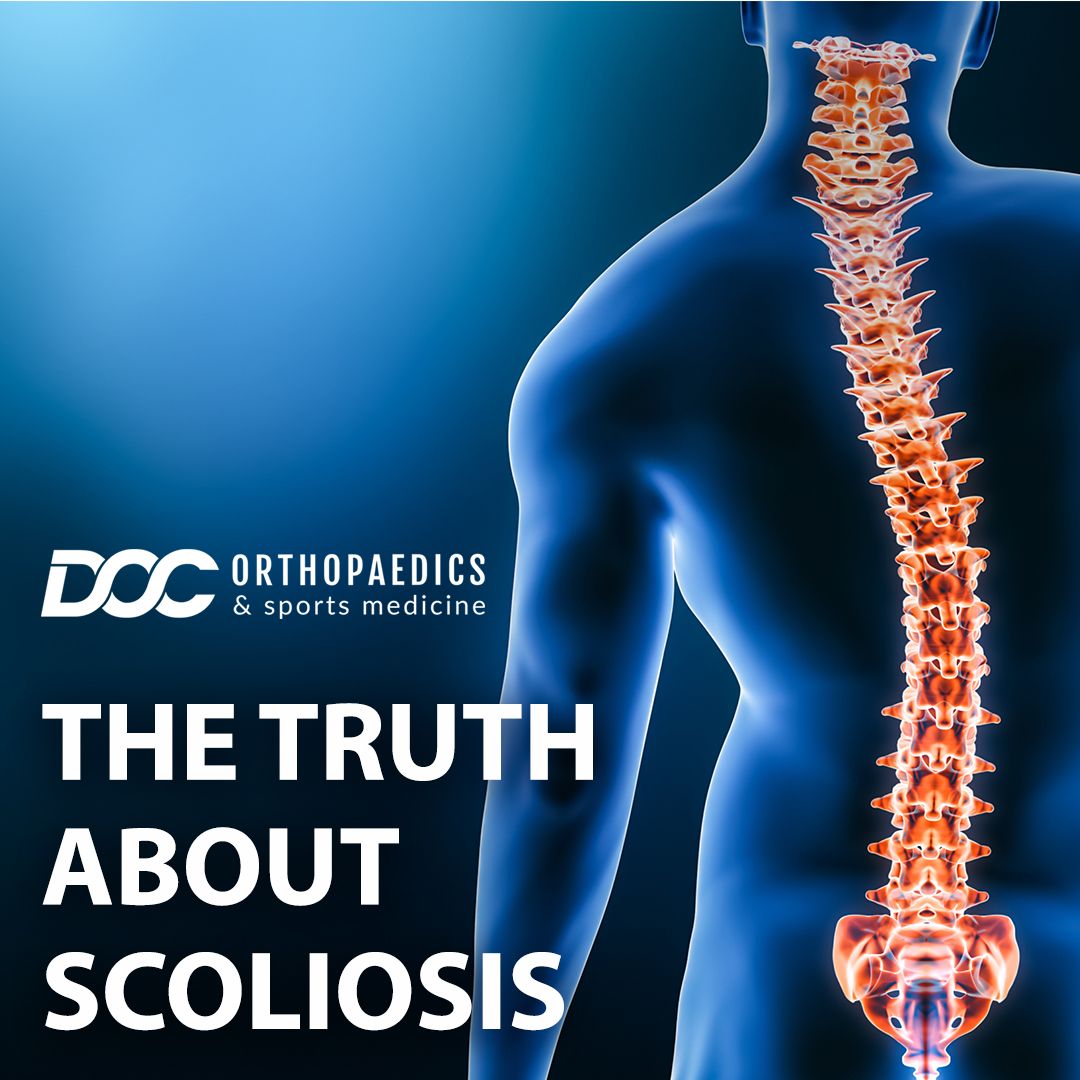
The Truth About Scoliosis
While scoliosis – a “C” or “S” shaped curvature of the spine – is most often associated with adolescents, based on the assumption that scoliosis stops progressing when growth stops in late adolescence, many adults also experience scoliosis as a result of spinal changes as ligaments weaken or vertebrae deteriorate with age. In fact, at least 60% of adults over age 60 have some form of mild scoliosis.
While early symptoms may include mild pain in the mid to lower back, scoliosis can progress to the point of spinal stenosis — a narrowing of the spinal canal — or severe spinal bending may jeopardize nerve function in your spine. Contributing factors such as osteoporosis or generative disc disease can also contribute to advancing scoliosis.
Let’s take a look at the facts about scoliosis and how it might impact you:
What is scoliosis?
Scoliosis is not a disease, but rather, a spinal abnormality in which your spine grows or moves into an abnormal curvature rather than a straight line. A spinal curve of 10 degrees or more is considered scoliosis. Keep in mind that the curvature can occur in three dimensions, shifting the spine into a twist or a front-to-back curve as well as side to side.
What causes it?
Most adults can develop scoliosis because of a degenerative condition of the spine, such as osteoporosis or degenerative disc disease. Because these conditions can have a slow onset, it is possible to develop curvature of the spine without realizing it.
What are the risks?
Left undiagnosed and untreated, scoliosis can progress from mild to severe, risking possible spinal stenosis — a narrowing of the spinal canal — or severe spinal bending which may jeopardize nerve function in your spine. In extreme cases, if scoliosis causes a spinal curve of more than 60 degrees, it can affect lung and organ function and cause some people to feel full faster, which can lead to malnutrition.
What are the symptoms of scoliosis?
Although not all scoliosis is painful, adults may first feel mild pain in the lower back caused by the possible impingement of the sciatic nerve. Not all sciatic pain is caused by scoliosis, but it may be a sign that your spine is putting pressure on the sciatic nerve and causing painful symptoms. Similarly, neck pain due to osteoporosis or arthritis may be an early indicator as well.
How is scoliosis treated?
For the majority of adults, scoliosis treatment does not require surgery. Typically, surgery is reserved for the most severe cases of scoliosis, and most orthopaedists opt for a more conservative treatment approach as a starting point. In most cases, that means physical therapy, exercise, and stretching to strengthen back muscles and relieve pain. While these conservative treatments won’t cure scoliosis, they can delay its progression and alleviate symptoms.
Can scoliosis be managed or cured?
There is no cure for any type of scoliosis, including degenerative, but in most cases, you can prevent symptoms from getting worse. You may have had mild scoliosis all of your life and not even realized it, as it may not have been painful or interfered with daily activities. If you do have back or neck pain as an adult, it could be a sign of a degenerative condition that’s slowly causing your spine to curve abnormally.
When should you see a doctor?
If you’re experiencing neck or back pain, it may be time to consider a visit with a specialist at DOC Orthopaedics and Sports Medicine. While you may not have scoliosis, your visit can serve as a valuable benchmark for future evaluations and uncover other potential root causes for your pain. The physicians at DOC Orthopaedics can also work with you to develop a personalized comprehensive care plan to help eliminate your current pain and potentially prevent future problems.
Since 1972, the specialists at DOC Orthopaedics have been committed to providing exceptional orthopaedic care through innovative techniques, quality services, patient communication, and education. With specialties ranging from general orthopaedics and physical therapy to sports medicine and more, the doctors at DOC Orthopaedics and Sports Medicine can provide local expert guidance to avoid injury, as well as any necessary care for any orthopaedic disorder or injury to help keep you healthy and pain-free. Click here to request an appointment today.

